Abstract
Implementation of an integrated electronic medical record requires direct physician order entry. This application involves multi-level changes in the whole system of care, from physicians attitudes to interdepartmental relations. This study reports the results of the first round of a modified Delphi, where a diverse group of individuals were asked to identify the most important facilitating and impeding factors associated with implementation of an order entry application. From a Q-sort of their responses, we identified 20 systemic, behavioral, and attitudinal dimensions perceived to be causal factors in successful implementation. We also explored how these dimensions may influence success by comparing successful with unsuccessful hospitals in terms of the frequency with which these dimensions were differently mentioned by respondents. We found that although available functionality was the most commonly mentioned factor by all participants, hardware availability, physician involvement, administration support, and medical administration involvement were more often mentioned by successful hospitals than by less successful hospitals. These results suggest that these factors were not present in the less successful hospitals. We also found that the frequency of responses within each category varied depending on the institutional role of the individuals responding. Those involved in support tended to see organizational variables as more important than those in clinical positions, whereas clinicians viewed administrative support and involvement of the chief as more important. These findings support the notion that the changes involved in instituting a physician order entry system are system wide and involve individual as well as organizational factors.
Full text
PDF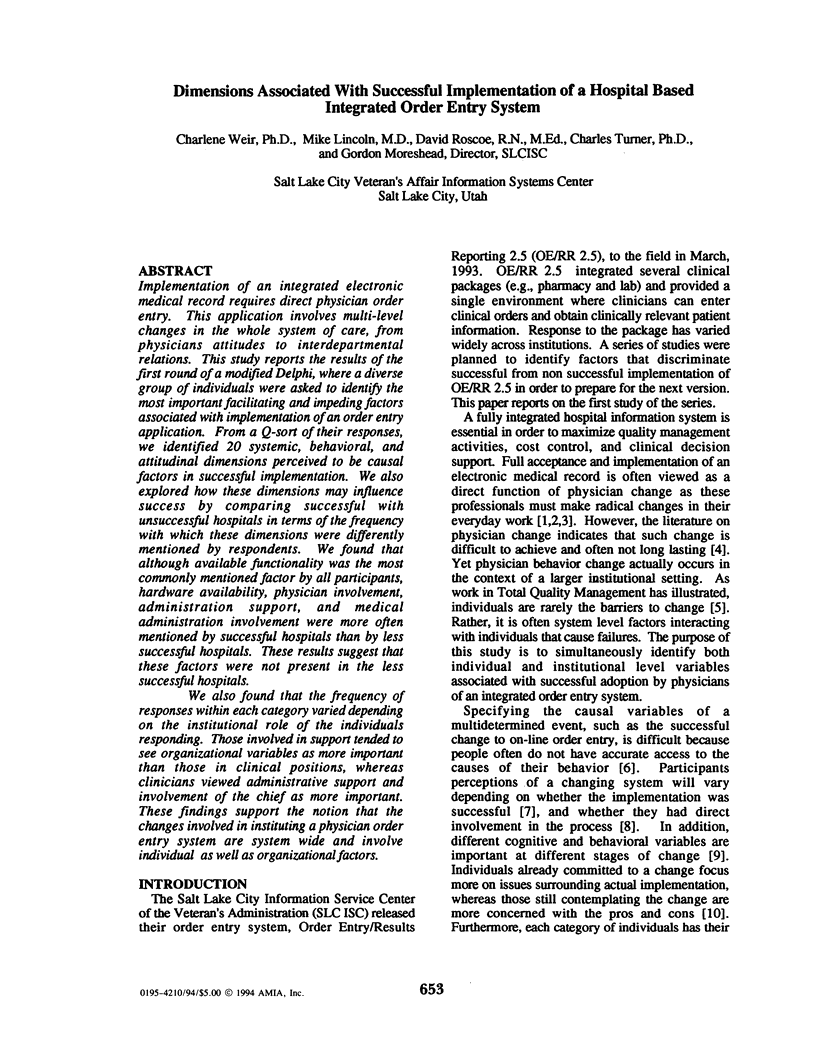
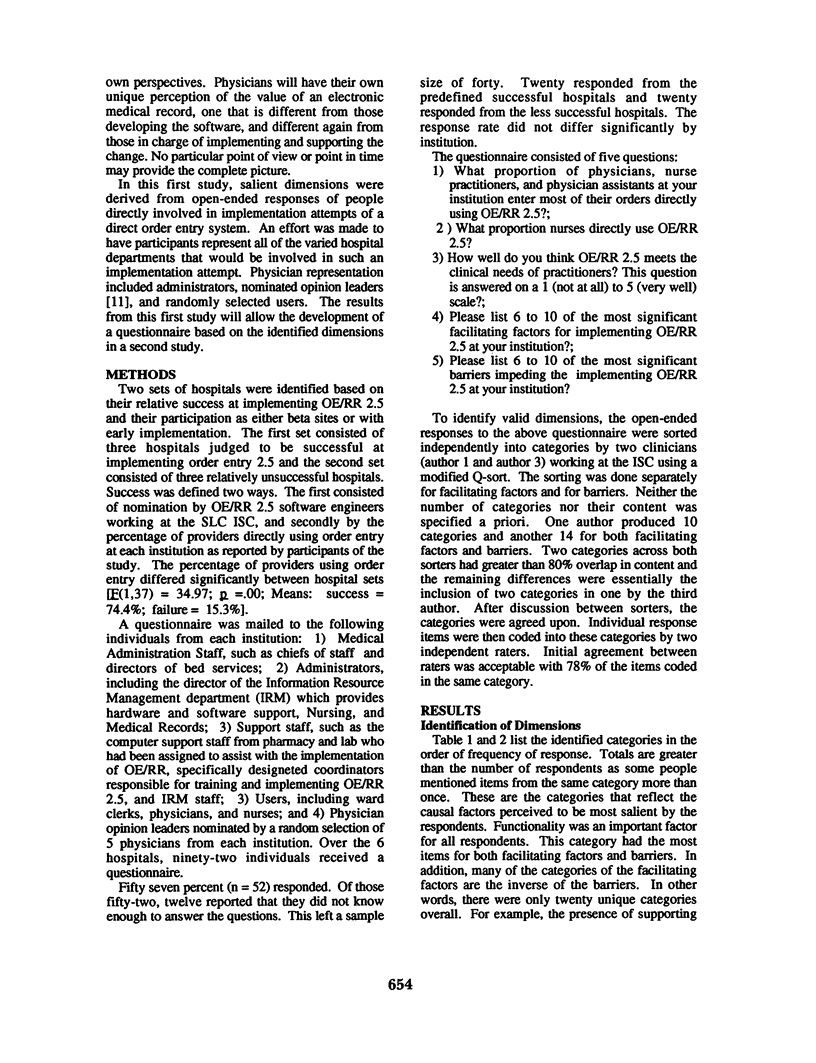
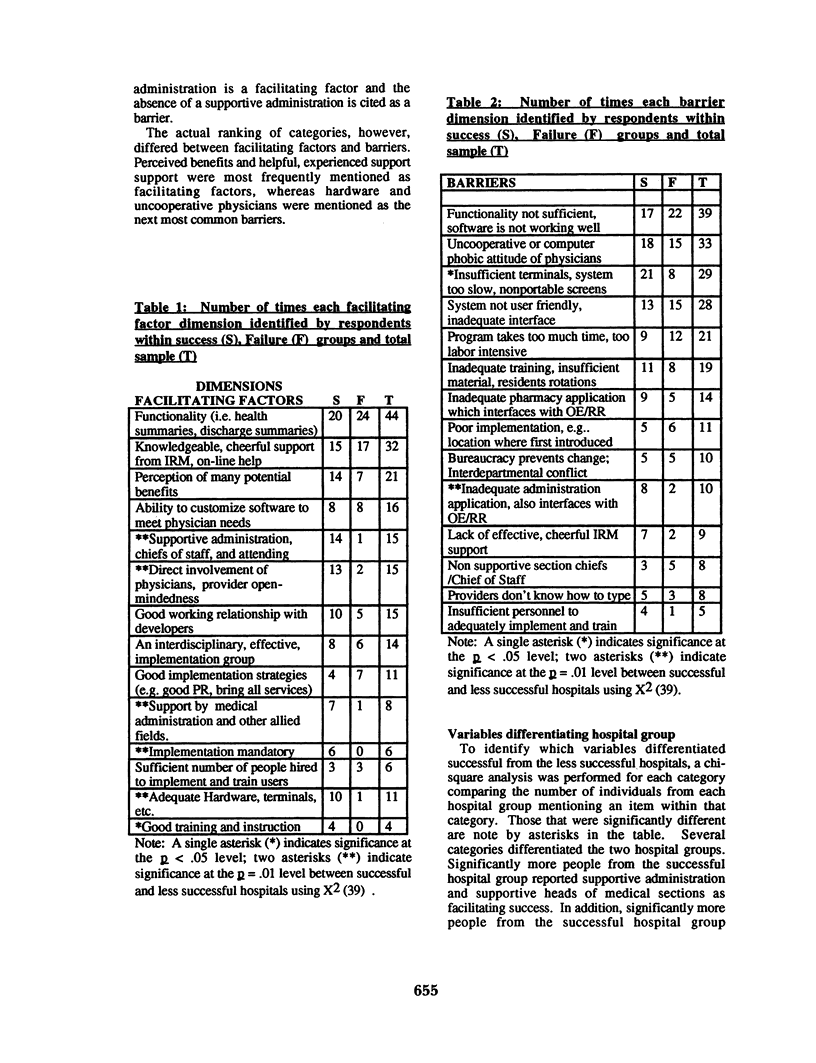
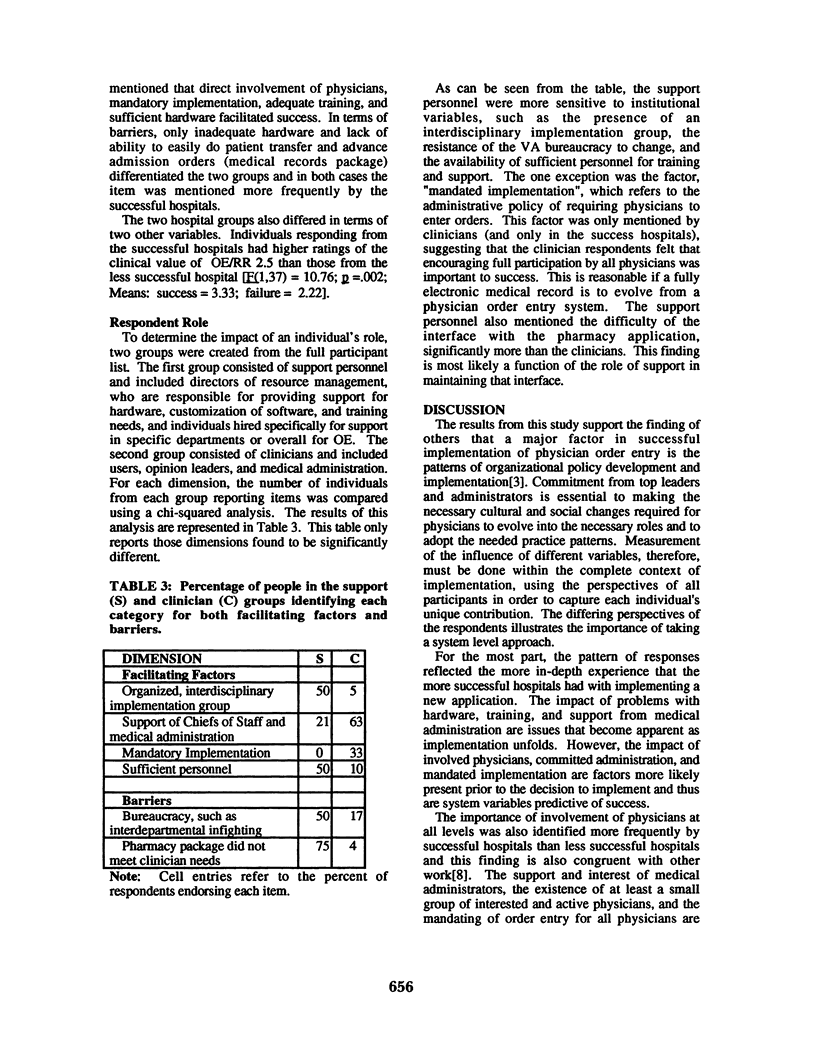
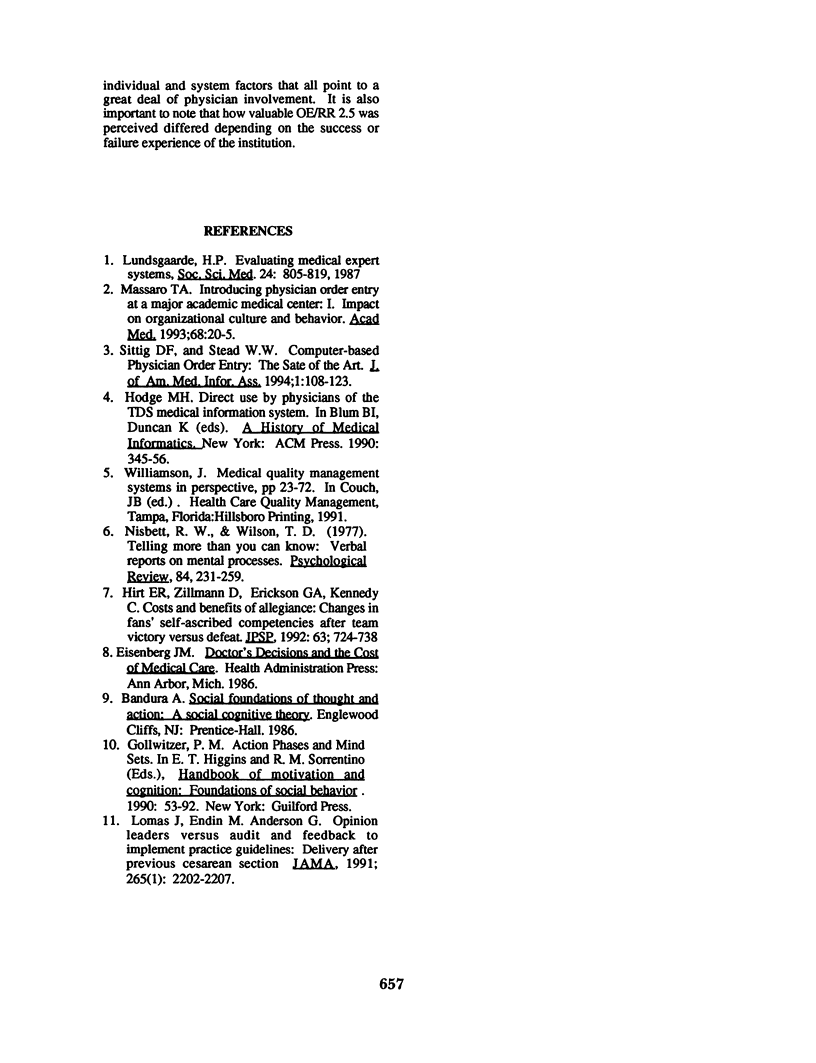
Selected References
These references are in PubMed. This may not be the complete list of references from this article.
- Lomas J., Enkin M., Anderson G. M., Hannah W. J., Vayda E., Singer J. Opinion leaders vs audit and feedback to implement practice guidelines. Delivery after previous cesarean section. JAMA. 1991 May 1;265(17):2202–2207. [PubMed] [Google Scholar]
- Lundsgaarde H. P. Evaluating medical expert systems. Soc Sci Med. 1987;24(10):805–819. doi: 10.1016/0277-9536(87)90182-1. [DOI] [PubMed] [Google Scholar]
- Massaro T. A. Introducing physician order entry at a major academic medical center: I. Impact on organizational culture and behavior. Acad Med. 1993 Jan;68(1):20–25. doi: 10.1097/00001888-199301000-00003. [DOI] [PubMed] [Google Scholar]
- Sittig D. F., Stead W. W. Computer-based physician order entry: the state of the art. J Am Med Inform Assoc. 1994 Mar-Apr;1(2):108–123. doi: 10.1136/jamia.1994.95236142. [DOI] [PMC free article] [PubMed] [Google Scholar]


